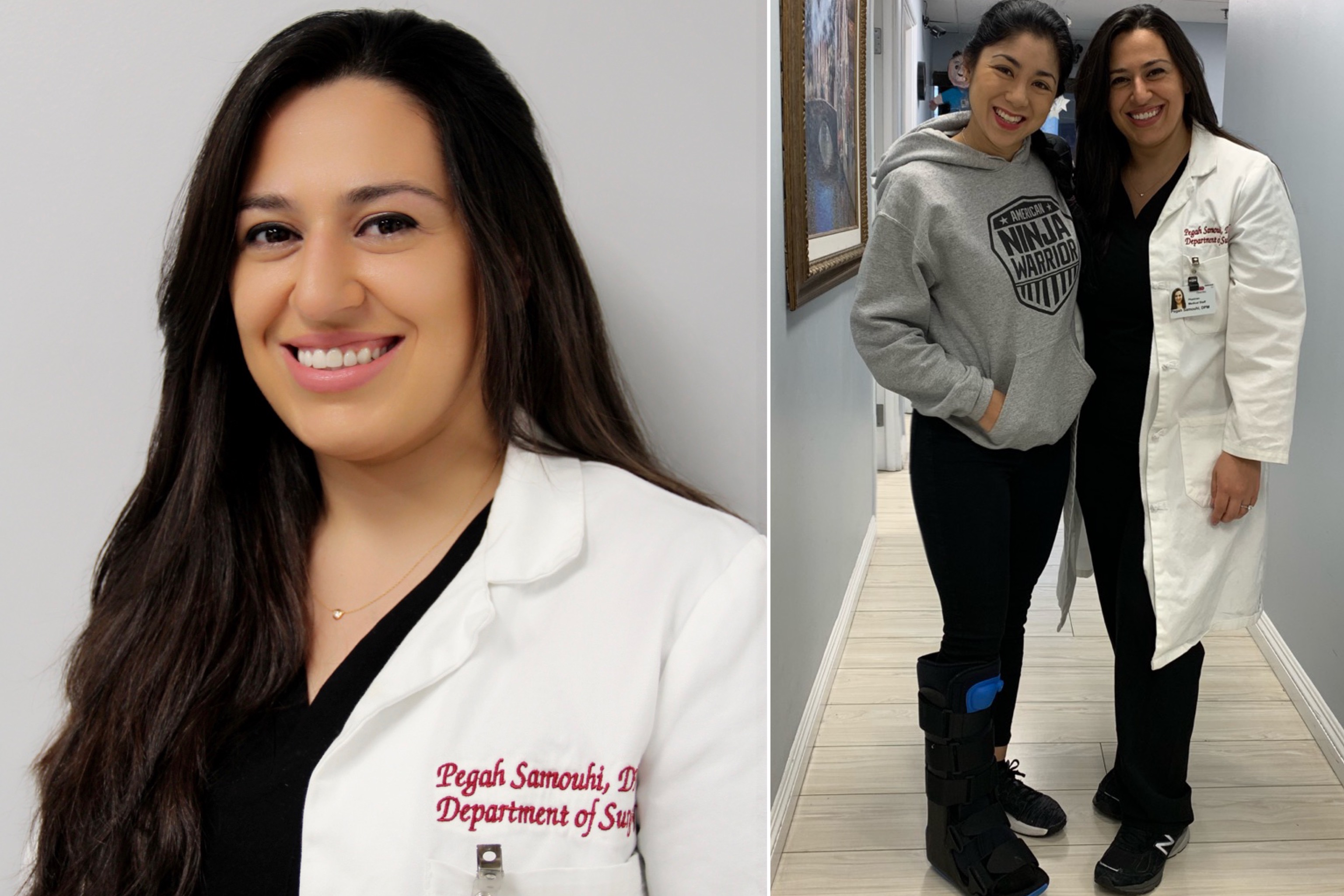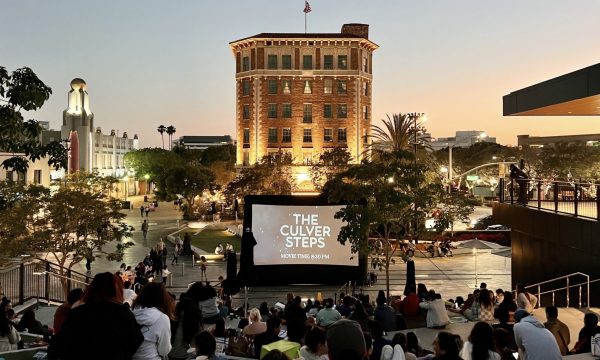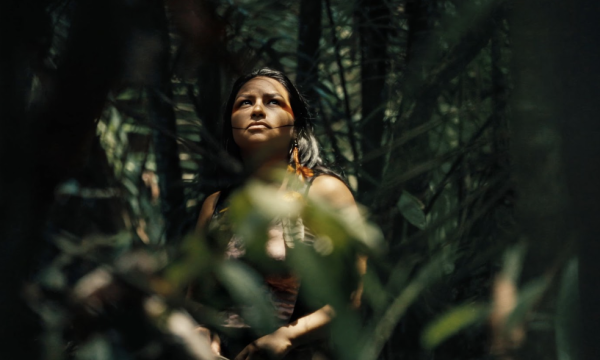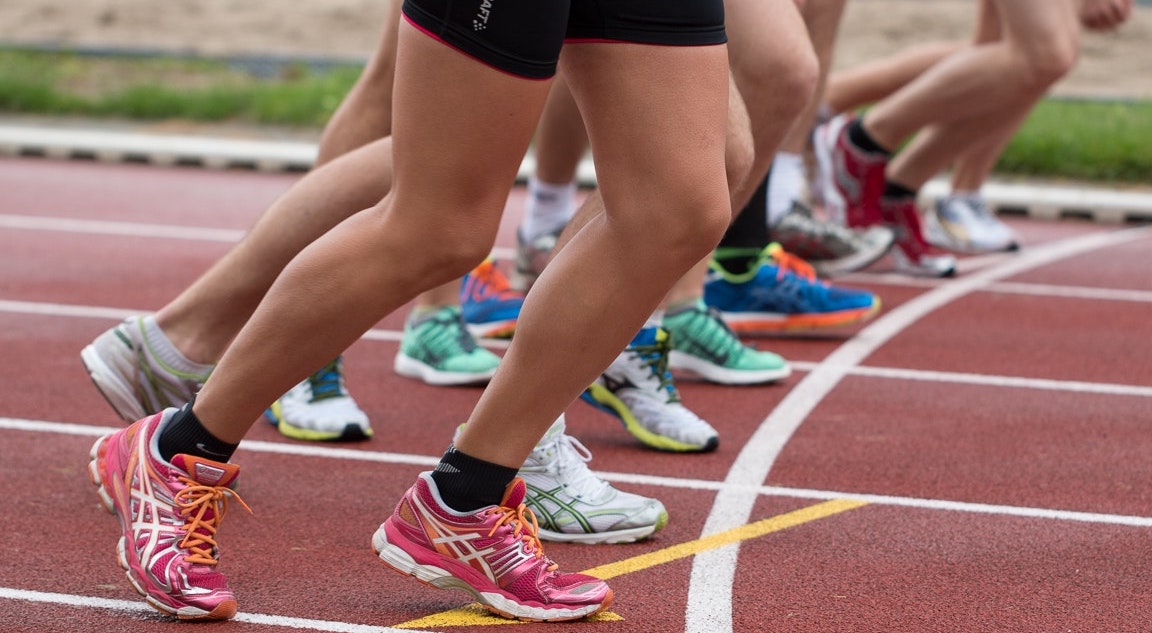
This past March, I was on a racing roll. Four races in four weeks. Two first place medals; one for a 10k trail race and one for an 8 mile + 33 obstacle Tougher Mudder. I was riding high… or so I thought. The great thing about running multiple races is that it keeps you constantly active especially when you're an athlete. The bad part about it? Well, you forget all of those times you rolled your ankle on those downhill turns and just continue running through it. The experienced athlete will train hard and recover harder. Rest, ice, foam roll. The novice athlete won't rest properly and will injure themselves time after time. Unfortunately, even a trained athelete can sprain an ankle as I did during my training.
Although many people would buy an ankle brace and let the ankle heal on its own, I decided to get myself an education and see the proper doctor who could teach me how to heal and prevent any more injuries in the future.
I was fortunate enough to meet Dr. Pegah Samouhi, DPM at Tower Podiatry located in Cedar-Sinai Medical Center. The moment I met Dr. Samouhi, I could tell that she cared and understood my passion for running. It's not often you meet a compassionate doctor who takes the time to hear your story. It turns out, Dr. Samouhi was an athlete herself.
"As a volleyball player with high arches I had many ankle sprains, which ultimately led me to see many podiatrists," she told me.
During her surgical training at Cedar-Sinai, she participated in sports medicine research and worked closely with foot and ankle Orthopedists on complex foot and ankle problems.
"As I completed my undergraduate studies as a premed major, I learned more about podiatry and it's ability to help people stay active and on their feet. I had the privilege of shadowing many podiatrists and saw the array of practices from wound care, sports medicine, reconstructive foot and ankle surgeries to elective procedures such as bunion and hammertoe repairs. Regardless of the complaints patients came with, I noticed patients leaving the office happy to be more mobile and active, and that attracted me to the profession," Dr. Samouhi added.
Dr. Samouhi was intrigued by the complex biomechanics of the foot and ankle and how the foot operates to allow people to walk. So, she became more involved with sports medicine and prescription of custom orthoses. She eventually joined the Tower Podiatry and B. David Massaband's team because the physicians treat patients as a whole and thoroughly assess the patient for any foot and ankle ailments. Additionally the practice encompasses a full range of podiatric practices from sports medicine, wound care, forefoot and rear foot reconstruction.
From the diagnosis of my ankle sprain and through recovery, I learned a lot from Dr. Samouhi and thought it would be helpful to share her advice to me with fellow weekend warriors and competitive athletes in hopes of preventing future injuries for myself and others.
An inversion injury is the most common cause of an ankle sprain and occurs when the ankle rolls outward and the foot turns inward. It results in stretching and tearing of the ligaments on the outside of the ankle.
Less commonly, the ankle rolls inward and the foot outward in an eversion injury, damaging the ligaments at the inside of the ankle.
The high ankle sprain is the least common. It can happen when the foot is forced to rotate toward the outside (away from the other foot), or when the foot is planted so it can't move and the leg is rotated toward the inside.
- Grade I is stretching or slight tearing of the ligament with mild tenderness, swelling, and stiffness. The ankle feels stable, and it is usually possible to walk with minimal pain.
- Grade II is a larger but incomplete tear with moderate pain, swelling, and bruising. Although the ankle sometimes feels stable, the damaged areas are tender to the touch, and walking is painful.
- Grade III is a complete tear of the affected ligament or ligaments with severe swelling and bruising. The ankle is unstable and may feel "wobbly." Walking is usually not possible because the ankle gives out and there is intense pain, although initial pain may quickly subside.
- An ankle sprain occurs when ligaments that connect the bones in the foot, ankle, and lower leg are stretched or torn. The ligaments shown in the picture are those that are most commonly sprained.
- For low grade ankle sprains (grades 1 and 2) the best course of action would be immobilization with boot or brace and RICE treatment initially, however I would start athletes on early range of motion exercises without weight bearing. The boot/ brace serves as a scaffold for the ankle so that the injured ligament can heal in the appropriate position and scar tissue that forms around the injured ligamment can form in an anatomically correct position. Early weightbearing out of the boot puts patients at a very high risk of re-injury.
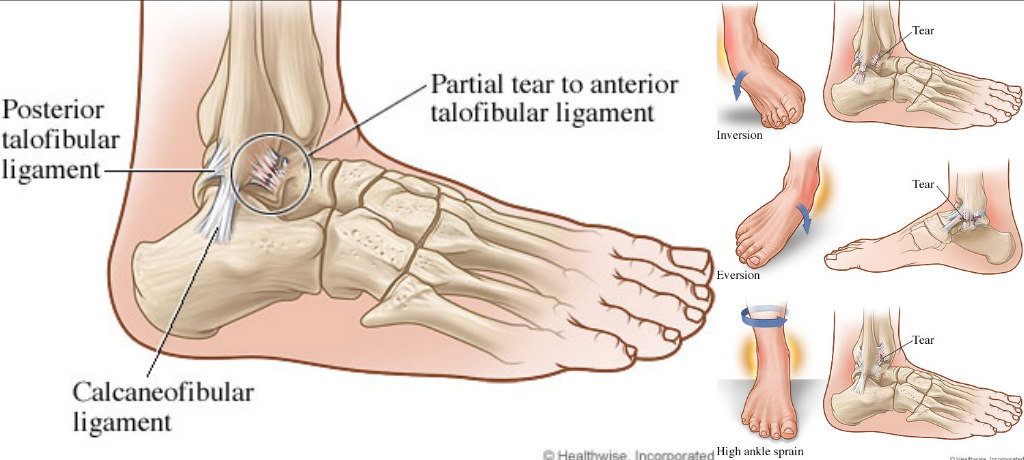
After you are able to place your full weight on the injured ankle without pain, you may begin proprioceptive training to regain balance and control of the ankle joint. I suggest these simple drills:
One-leg Balance and One-leg Squats: Try to stand on one leg for 10 to 30 seconds. Increase the intensity by doing this with your eyes closed.
Balance Board Ball Toss: While balancing on a wobble board, balance board, or Bosu Ball, catch and toss a small (5 pound) medicine ball with a partner.
Balance Board with Half-squats: While balancing on a wobble board, perform 10 slow, controlled half-squats.
Step up onto Balance Board: Place a balance board (or soft pillow or foam pad) 6 to 8 inches higher than your starting point. Step up 10 times.
Step down onto Balance Board: Place a balance board (or soft pillow or foam pad) 6 to 8 inches lower than your starting point. Step down 10 times.
I recommend that activities such as jogging running and cycling should only take place once your ankle is stable enough to balance on for 3 minutes without pain. I also recommend starting at 10% of your baseline activity and only increasing by 10% a week. For example if you are running 10 miles at your baseline (when you were healthy) the recommendation is to start with running 1 mile for week 1, then increasing to 2 miles for week 2 and so on until you are at 10 miles. However, certain athletes of your caliber and physical ability can recover faster than the general public and I am okay with increasing athletes at a 20% rate every week.



